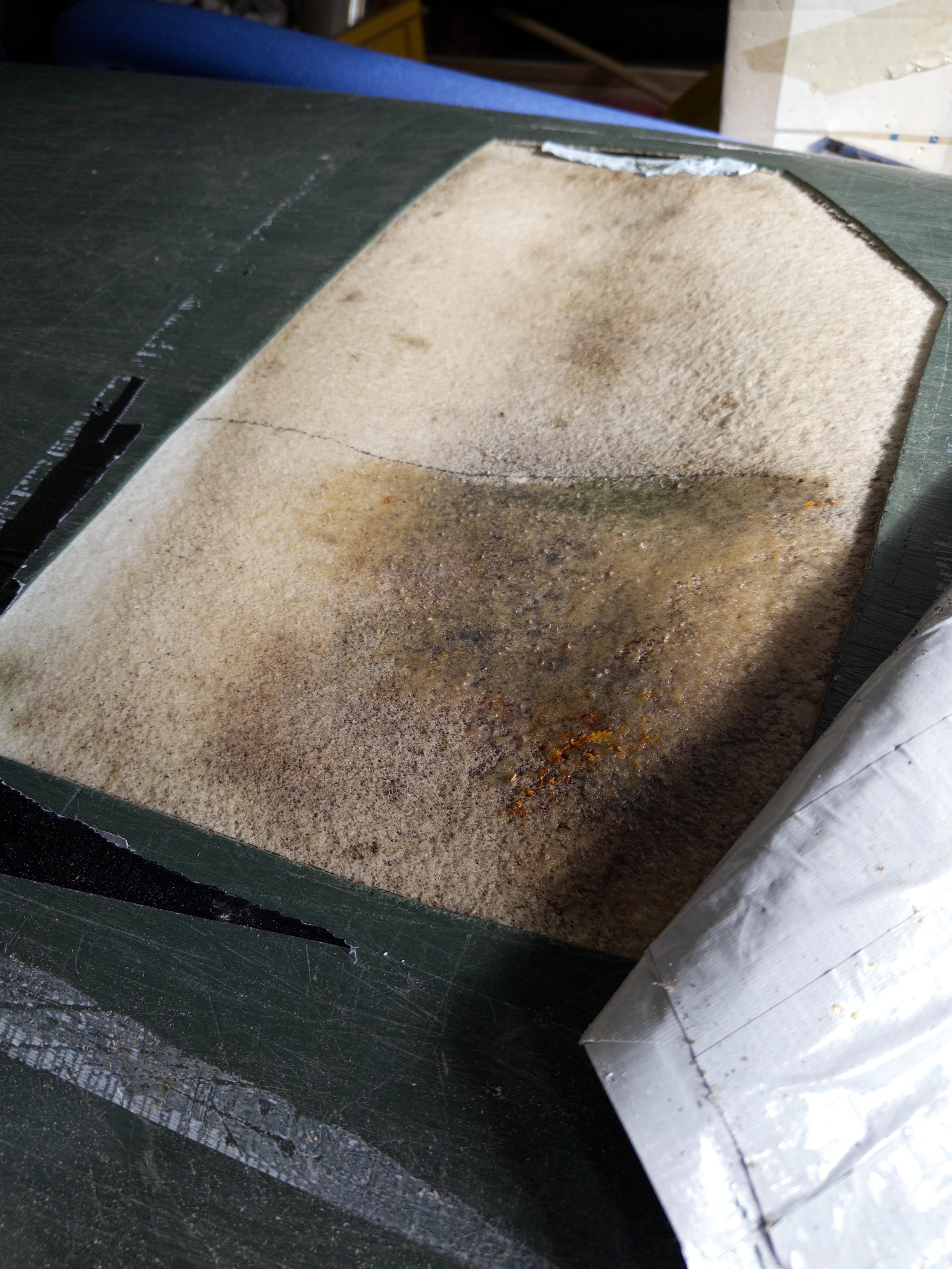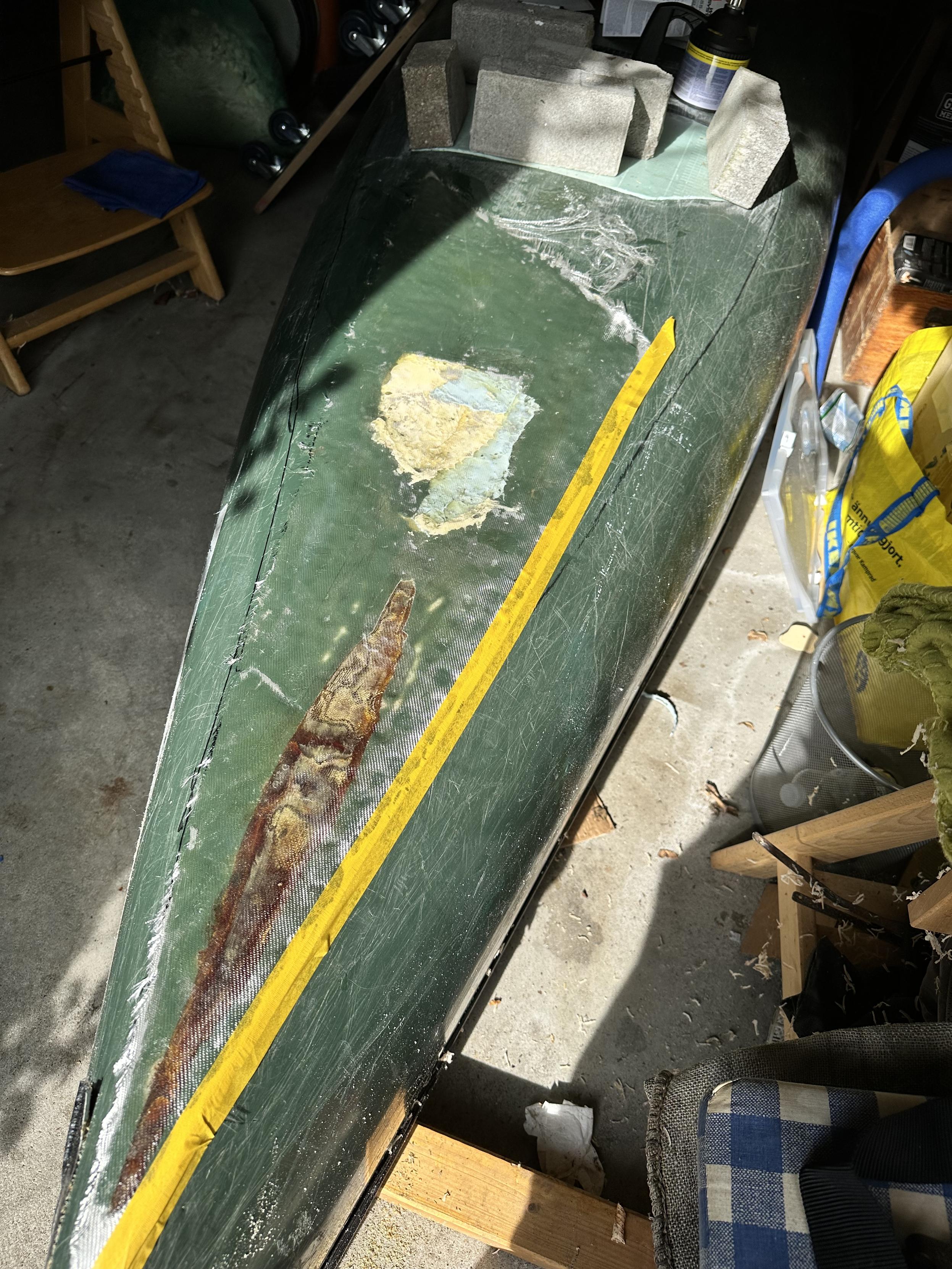Project: Canoe Restoration — Written on
Third attempt to fix the polyethylene canoe
I had a partial win using g-flex epoxy on the canoe. The only thing is that its way too expensive to fill that whole cavity. My expectation was that one set (125ml of each resin and hardner) would be enough to fill in the void. But as it turned out, I used a quater of the tubes and the resin mixture just sank in to the grey polyethylene foam without covering a lot -- even if I would use a filling material in it like the usual cotton fibers.

The important thing to note from the previous experiment is the fact, that the epoxy sticks to the polyethylene pretty well. So, I had the idea to not use it as the main component, but as a glue.
An interesting trip to the builders' supply store
On a trip to get some other supplies, I found polypropylene foam sheets usually used to dampen sounds under flooring. I bought a set of five millimeter sheets.
One of those sheets was enough to cover and fill the hole. And my next attempt was to rip out a much of the polyethylene foam as I could to give the new foam a bigger and more even bonding surface. I then glued the foam in with half of the remaining epoxy and used the other half to glue a sheet of glass fiber over the other, smaller holes.
If the glass fiber sheet and the foam pad stick, I will buy another set of epoxy and glue a sheet of glass fiber over the foam. If not, this will be the end of fixing this canoe.

